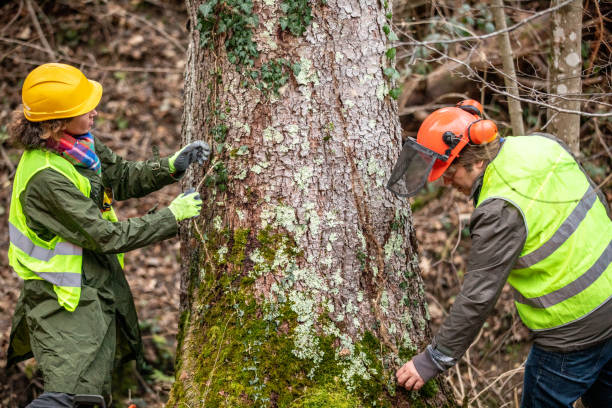When it comes to tree trimming, your techniques can vary greatly depending on the season. In winter, it’s all about removing dead or diseased branches while the tree is dormant, reducing the risk of pests. Spring offers a prime opportunity for shaping, using the tree’s vigorous growth to enhance sunlight penetration. As for summer and fall, your focus shifts to removing damaged branches and prepping the tree for winter’s harsh conditions. But how do you know exactly what to do and when? Let’s explore the specifics to keep your trees in prime condition year-round.
Winter Pruning Tips
Winter pruning is essential for maintaining healthy trees, and it’s the perfect time to do it since most trees are dormant. Pruning in winter minimizes the risk of disease and pests, as they’re less active in colder temperatures. Start by removing dead, damaged, or diseased branches. This helps prevent the spread of decay and allows the tree to direct its energy towards healthier growth.
Next, focus on thinning out branches that are crossing or rubbing against each other. This reduces the risk of wounds and improves air circulation, which can prevent fungal infections. Make your cuts just above a bud or branch junction to promote healthy regrowth.
Don’t forget to sanitize your tools before and after pruning each tree to avoid transferring any diseases. A mixture of one-part bleach to nine parts water works well. Also, ensure you use sharp tools to make clean cuts, as ragged cuts can harm the tree and slow healing.
Spring Shaping Techniques
Spring is the ideal season to shape your trees, as new growth makes it easier to guide their form. Trees enter a vigorous growth phase, meaning they can quickly recover from cuts and wounds. Start by identifying any dead, damaged, or diseased branches and remove them first. This improves the tree’s health and gives you a clearer picture of its structure.
After the initial clean-up, focus on shaping the tree. Use sharp, clean tools to make precise cuts, which helps the tree heal more effectively. Make sure you cut just above a bud facing the direction you want the branch to grow. This encourages the tree to develop a balanced, aesthetically pleasing shape.
Don’t forget to thin out crowded areas. This allows sunlight and air to penetrate the canopy, promoting healthier growth. Be careful not to remove more than 25-30% of the tree’s foliage at once, as this can stress the tree and stunt its growth.
Lastly, avoid trimming trees that flower in spring until after they’ve bloomed. This ensures you don’t cut off buds about to open, preserving the tree’s beauty.
Summer and Fall Maintenance
As summer transitions into fall, it’s crucial to continue maintaining your trees to ensure their long-term health. During summer, remove any dead, diseased, or damaged branches. This helps prevent the spread of pests and diseases, which are more active in warmer months. Additionally, thinning out crowded branches allows better air circulation and sunlight penetration, reducing the risk of fungal infections.
In fall, concentrate on structural pruning to prepare your trees for the winter months ahead. Remove any weak or crossing branches that could break under the weight of snow or ice. It’s also a good time to remove overgrown areas to maintain the tree’s shape and balance. However, be cautious not to over-prune, as this can stress the tree and make it more vulnerable to cold weather.

